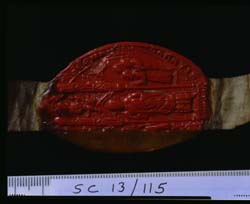 |
 |
 |
 |
 |
 |
 |
|
Byland Abbey: History
Byland Abbey: Buildings
|
External affairs In the later Middle Ages, Byland was dogged by growing demands from the State, the Church and the Order, and also the ravages of warfare. The Scots’ attempt to secure an independent kingdom had serious consequences for the religious houses in the North of England, which were looted, pillaged and destroyed by the Scots invaders. The severity of the situation intensified in June 1314, following Robert the Bruce’s victory over the English at Bannockburn. The North of England now lay defenceless, and in November 1314, the abbot of Byland received notification from the archbishop of York and the bishop of Durham of the imminence of a Scots’ invasion. They requested that he, along with the abbots of Fountains, Rievaulx, Furness, Selby and St Mary’s, York, attend a council in York the following January, to decide on a plan of action.(64) Fountains and Jervaulx suffered considerable damage in 1318/19 but Rievaulx and Byland were more directly affected in 1322, when the Scots invaded on two occasions and the Battle of Byland was fought on Blackhow Moor, to the north of Byland. In October 1322, the earl of Richmond was captured by the Scots invaders, and when news of this reached the ears of Edward II (1307-1327), he fled from his refuge at Rievaulx Abbey, leaving behind him the royal plate.(65) The Scots subsequently raided the monastery and seized the royal treasure. In 1344 Byland received permission to appropriate the church at Rillington, in recognition of the damage they had suffered from the Scots ’ invasions.(66)
The abbot of Byland was amongst those summoned to attend the trial of the Templars in the North, which was held at St Peter’s, York, in May 1311.(67) The commission was at first divided as to what should be done with the twenty-four Templars, but eventually agreed that they ought to be absolved and dispersed amongst various religious houses, where each would be received as a guest. It seems that Byland was allocated a Templar and, no doubt, like its fellow Cistercians, the community regarded this newcomer with hostility.(68) Growing demands from the Church, the State and the Order meant that the community at times faced conflicting loyalties. In 1300 the abbots of Byland and Kirkstall were formally absolved by the archbishop of York for blatantly disregarding papal legislation and paying subsidies to the king.(69) |
